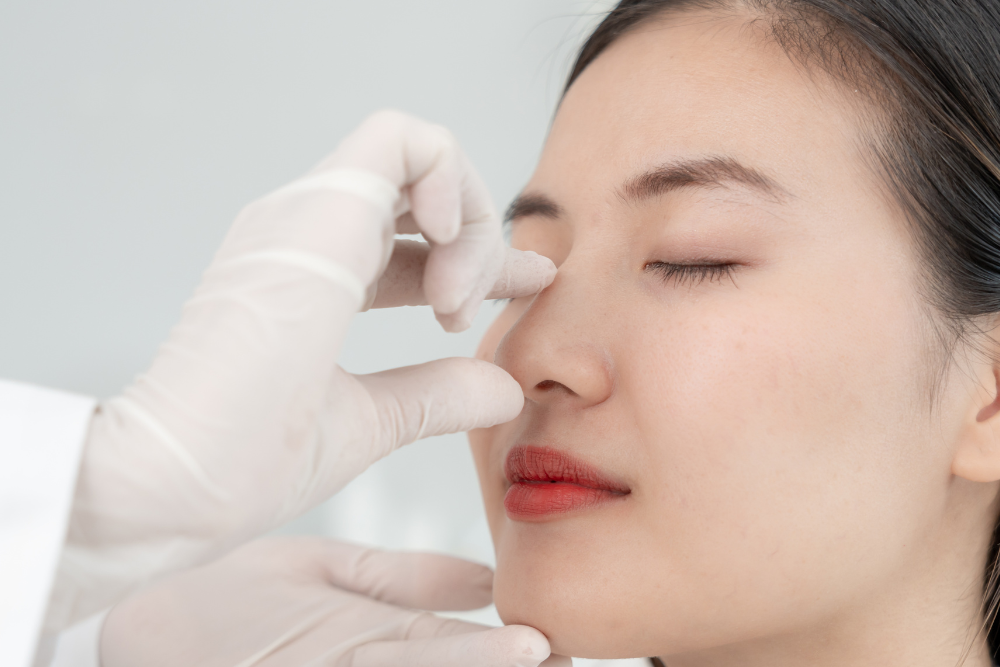





Delivering Excellence in Facial Plastic Surgery
Precision. Passion. Perfection
Safe, Artful Transformations for Your Face
Comprehensive ENT Care for Kids and Adults.
Your Family's ENT Care, Fully Addressed
Rhinoplasty: Enhancing Nasal Aesthetics
and Function.
SKIN CANCER TREATMENT IN SINGAPORE
WHAT IS SKIN CANCER?
Skin cancer is the uncontrolled growth of abnormal skin cells and is primarily caused by DNA damage often induced by ultraviolet (UV) radiation from the sun. The three most common types of skin cancer are:
BASAL CELL CARCINOMA (BCC)
The most common form, BCC grows slowly and rarely spreads to other parts of the body. It appears as a translucent bump on the sun-exposed skin, often with tiny blood vessels or an indentation in the centre.
SQUAMOUS CELL CARCINOMA (SCC)
SCC is the second most common type, characterized by a red firm bump, scaly patch, or a sore that heals and then re-opens. It can be more aggressive than BCC and may spread to other body parts if left untreated.
MELANOMA
The most dangerous form due to its likelihood to spread (metastasize) to other body parts. Melanomas often resemble moles and are typically black or brown, but they can also be skin-coloured, pink, red, purple, blue, or white.
DIAGNOSIS - SKIN CANCER CHECKING IN SINGAPORE
Diagnosis of skin cancer usually involves a physical examination followed by a biopsy where a sample of the skin is taken for laboratory analysis. Dermoscopy may be used, a non-invasive method that provides a magnified view of the skin’s features.
TREATMENT
Treatment depends on the type, size, and location of the cancer, as well as the patient’s health. Options include:
- Surgical Excision
- Mohs Surgery
- Cryotherapy
- Topical Treatments
- Radiation Therapy
- Chemotherapy
- Photodynamic Therapy (PDT)
- Laser Therapy
FACIAL RECONSTRUCTION
The process often involves advanced surgical techniques, such as skin grafts or flaps, to cover and heal the excision site. The goal is to achieve a result that is as aesthetically pleasing as possible while ensuring that all cancerous cells have been removed.
PREVENTION
Preventive measures, such as using sunscreen, wearing protective clothing, and avoiding peak sun hours, are crucial in reducing the risk of skin cancer. Regular skin checks by a dermatologist are recommended for early detection and treatment.
PROACTIVE CARE: ADDRESSING SKIN CANCER WORRIES WITH DR SANDEEP
If skin cancer is on your mind, proactive steps are key. Book a visit with Dr Sandeep for a comprehensive skin evaluation and specialized counsel on skin cancer. Our clinic is equipped to provide you with thorough skin cancer screenings in Singapore and preventative guidance.
Take the initiative for your dermatological well-being. Peace of mind starts with a professional consultation. Book your appointment now.
READ ALL SKIN CANCER BLOGS HERE
Explore Our Other Treatments – Rhinoplasty Singapore, Facelift Singapore, Double Eyelid Surgery Singapore, Otoplasty Singapore, Upper Blepharoplasty Singapore, Brow Lift Singapore, Facial Laceration Repair Singapore & More!


